 I think many schools are asking themselves the above question as they look to improve on what they currently offer and as they prepare for what could be a long period where at least some students will be working remotely due to isolation resulting from Covid19 symptoms.
I think many schools are asking themselves the above question as they look to improve on what they currently offer and as they prepare for what could be a long period where at least some students will be working remotely due to isolation resulting from Covid19 symptoms.
The issue with this question, is that if you remove the word online from the question, you arrive at another question. What does a great online learning experience look like? The difference is that we have had decades and even centuries to identify what makes a great learning experience whereas for online learning we have had only a couple of decades, and it has only been with the recent crisis that so many have found the need to give this serious thought. Given we have been unable to reach a satisfactory answer for general learning I think it becomes doubtful that we will be able to come up with such an answer for online learning. This, however, doesn’t mean we shouldn’t try or that we shouldn’t share ideas or share experiences, indeed I think it is critical we do. Each idea or experience is another thing learned and another step forwards and closer towards that which we seek: great [online or face to face] learning.
So now for my tuppence worth on great online learning. Am just going to outline my thoughts as they stand as to things which great online learning needs to contain:
- Wellbeing and balance
Am putting this point first on purpose. It is all too easy to be drawn into the world of students and teachers messaging each other at all hours of the day or night, or spending hours developing content or coursework. The digital world as many an author has put it, can be addictive. We need to be conscious of this and set clear boundaries plus we need to put in places structures and processes for all to seek support should they need it. Above all we must remember the human aspects of learning, of schools, of education and of the wider world.
- Sync and async
Am not going to rehash my earlier post on the benefits and drawback of synchronous or asynchronous learning; You can read the piece here if you would like. This is about balance and what works for teachers and students. Start with a balance that works for you and then adjust until you find a point where you and the students have enough real time interaction and enough tasks which are self-directed.
- Regular check-ins with students
Linked to the above, to decide on the balance, we need to seek feedback from students. We need to ask them if there is enough self-directed work, enough real time interaction, enough support resources, enough time for the work set, etc. In a class we have lots of visual and auditory cues as to how lessons are going; We don’t have the same access to these cues when teaching online, so we need to find another method to check in with students and to gather this data. This could use an online form or be a discussion point for a video chat or be any number of other methods; It isn’t important how the info is gathered. What matters is that it is gathered and that the learning experiences are adjusted accordingly.
- Space for students to chat with peers, to be social and to decompose learning
We so often focus on the learning and this is vitally important however we mustn’t forget the social aspects of learning. The classroom, the school corridor, the canteen, etc are all a very social experience for our students. This is where students catch up with the latest goings on, the latest TikTok craze but also where lessons, homework, etc are discussed in passing. As such we need to try and replicate at least some of this in the environments we create for online learning. For some this might be as simple as a chit chat space used by the class for general chat or it might be a year group or even whole school online social space. The important thing is we need to provide such spaces. It is also the case the staff would benefit from similar spaces whether this be an online Staff Room or a virtual pub.
- individuals and Groups
There can be a tendency in online learning towards students working individually; Think the student working on their device at home, working through a task set by the teacher. This is especially common where learning is asynchronous. It is important to remember that in face to face lessons we regularly mix individual and group work dependent on the learning, the students, etc. We need to remember to do this within online learning environments and to be conscious of the tendency towards tasks which are individual. This may therefore require that more effort needs to go into providing situations for students to work together.
- Wider networks and crowdsourcing

Students, if encouraged, will actively seek solutions. As a result of this there are significant opportunities where students are allowed to develop their own structures for sharing, discussion and other collaborative activities outside the formally create online structures a school will create (e.g. form groups, subject classes, year groups). Just consider how some students have crowd sourced the exam questions, answers and mark schemes for GCSE and A-Level exams within days of the exam and long before the exam boards release any info. I believe it is therefore important to give students some flexibility to create their own groups and online structures based on their needs rather than having a centrally controlled structure mandated by the school. This might be a creating a book club or study group, project meetings for a class project or a group focussed on a civic movement; The main thing being the students are empowered to create such groups as the need and interest arises.
- Teachers and student professional development in IT and EdTech
EdTech tools are just that, they are tools. Like any tool there needs to be support and training so that they can be used effectively both by the teachers and the students. Only then can we possibly get the best out of the EdTech tools we have available. A believe a key requirement here is a community and culture of sharing, a culture where it is safe to try things and admit and share where they didn’t work, a culture which is open and continually seeking to improve and/or develop, and a climate of warmth and positivity.
- Feedback
One particularly important benefit of EdTech in my view relates to providing students with feedback. Technology allows this to be automatic in some cases, with feedback instantly given to students based on tests they complete. Students can also seek support from teachers in-between lessons and teachers can provide guidance and correction where students are going wrong, but at any time rather than being forced to wait for the next lesson. This all makes for potentially more dynamic feedback and opportunities to address areas of difficulty more quickly. I will however note that balance is important here and care needs to be taken in relation to point 1 and teacher/student wellbeing where an “always on” learning environment may develop.
- Be inventive and seek new solutions, plus put on a show
Innovation is important; We haven’t had the time to do countless research studies into what works in remote learning with the technology we now have available to us. Yes, there are studies, but few are current enough to cover the current myriad of EdTech tools available to use in todays lessons and learning experiences. This reminds me of the phrase, “building the plane while we fly it”. As we don’t have plans and studies to go on, we need to try new things and to be inventive. Linked to this is the need to engage and excite students with the learning experience. This isn’t appropriate for every lesson as some content may need to involve desirable difficulty, however in any period of learning there needs to be something to grab students attention. Aligned with this is the need for a performance; Teaching for me has always been a bit of a performance with the teacher as the main actor putting on a show. Teaching remotely, whether live or on-demand, has the same requirement for at least some showmanship albeit it may not look the same as it does in the face to face class. The best online learning experiences are likely to contain at least an element of the teachers character in their structure and/or delivery.
- Engaging parents/guardians
Remote learning happens in the home and therefore it isn’t complete without considering parents/guardians and how they can support learning but also how online learning from home might impact the balance and flow of home life. It is therefore important to build processes for communicating and keeping parents up to date and for involving them in decision making around the online learning experience. Like with traditional face to face lessons in a classroom, an effective school-home relationship only benefits learning.
- Beyond the school
Online learning and the fact students are online allows them access to the vast resources of the wider world. From websites or YouTubes videos covering maths subject content to skype calls with an astronaut. In online learning there is an opportunity to reach beyond the curriculum, beyond the bounds of the classroom and give students a breath of experiences which in the past wasn’t possible.
- Safeguarding
It isn’t possible to consider online learning without considering the safeguarding aspect where students are online and engaging in lessons through a virtual platform of one type or another. I am not going to be prescriptive here as to what this should look like as it is for individual schools to consider the risks and their risk appetite, to identify what they are willing to accept or not accept, and to put appropriate mitigation measures in place. My biggest concern here is overly strict control being applied as I believe the comfort such controls may provide a schools leadership team hides the real world ineffectiveness of such controls. If learning is online, and the schools platform doesn’t allow students to do what they want to do, then this may force them to other platforms out with school control or monitoring. I would rather have students on the schools platform where the school can support them when they make the inevitable mistakes.
Closing thoughts
When I set out to write this post it was just going to be a couple of ideas dumped on a page. As it turns out it is significantly longer than I anticipated and on reflection it still is rather limited. To do the subject matter any justice I think this post would quickly turn into a book or a whole blog of its own.
For now I am going to leave it here in the hope that there is some value in these roughly put together thoughts.







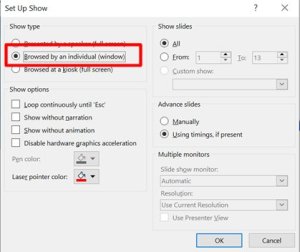


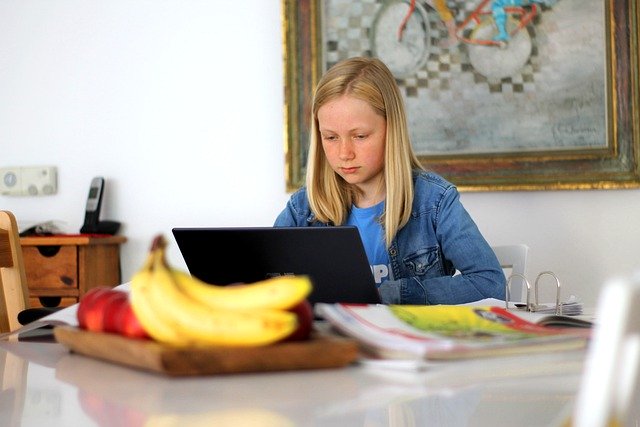 Schools all over the world have had to switch very quickly to remote learning. This has resulted in all manner of challenges in relation to hardware, software, deployment, use in lessons, staff IT skills and EdTech pedagogy and a variety of others. Over this short period of time, I feel a huge amount has been learnt. That said I think once the governmental lockdowns are lifted, a lot of what happens in schools will attempt to return back towards the way it used to be. This attempt to return towards the previous normal is natural, it is an attempt to return towards what is comfortable, known and familiar versus the current situation which is uncomfortable and unfamiliar for many. The danger here is that we may lose the lessons learnt from the last couple of months. As such I thought it appropriate to write a post focussing on the learning points, or at least the 6 key learning points, I believe we need to take from the Covid19 crisis and the resultant period of remote learning.
Schools all over the world have had to switch very quickly to remote learning. This has resulted in all manner of challenges in relation to hardware, software, deployment, use in lessons, staff IT skills and EdTech pedagogy and a variety of others. Over this short period of time, I feel a huge amount has been learnt. That said I think once the governmental lockdowns are lifted, a lot of what happens in schools will attempt to return back towards the way it used to be. This attempt to return towards the previous normal is natural, it is an attempt to return towards what is comfortable, known and familiar versus the current situation which is uncomfortable and unfamiliar for many. The danger here is that we may lose the lessons learnt from the last couple of months. As such I thought it appropriate to write a post focussing on the learning points, or at least the 6 key learning points, I believe we need to take from the Covid19 crisis and the resultant period of remote learning. During this crisis we have seen communities come together to support each other, for example in the weekly clap for the NHS. We have seen lots shared online on how to remain healthy and on wellbeing. There has been recognition of the difficulties and challenges being experienced by teachers, parents and students, plus a real sense of community has become apparent. The Covid19 crisis has been a turbulent time for many, in uncertainty, in personal loss and in change. Even when lockdown is eased many will continue to have to deal with these issues and therefore it is important that we continue to be cognizant of the human element of schools and of the importance of community spirit and support. This includes the health, both mental and physical, plus the general wellbeing of students, staff, parents and the wider school communities. Before learning, before curricula, before assessment for or of learning, before everything, people come first, adults or children. We need to ensure we consider them first in all we do, both online or in real life.
During this crisis we have seen communities come together to support each other, for example in the weekly clap for the NHS. We have seen lots shared online on how to remain healthy and on wellbeing. There has been recognition of the difficulties and challenges being experienced by teachers, parents and students, plus a real sense of community has become apparent. The Covid19 crisis has been a turbulent time for many, in uncertainty, in personal loss and in change. Even when lockdown is eased many will continue to have to deal with these issues and therefore it is important that we continue to be cognizant of the human element of schools and of the importance of community spirit and support. This includes the health, both mental and physical, plus the general wellbeing of students, staff, parents and the wider school communities. Before learning, before curricula, before assessment for or of learning, before everything, people come first, adults or children. We need to ensure we consider them first in all we do, both online or in real life.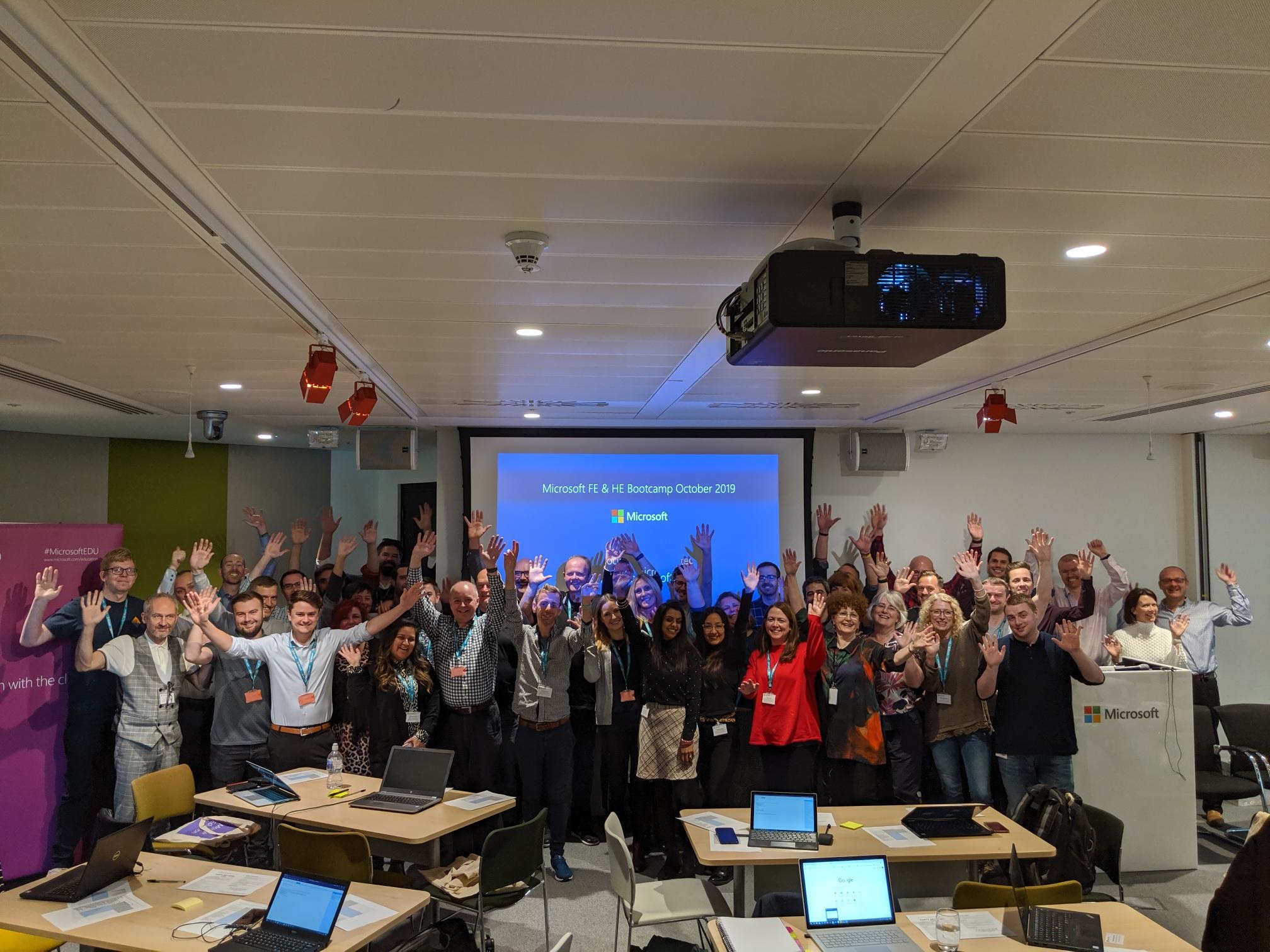 I have always found the global educator community to be very helpful especially on Twitter, which has been my go-to place for a number of years. I feel, during this crisis, the Global Educator community has really stepped up its game. I have heard new voices sharing their thoughts, ideas and resources while existing voices have generated new platforms to share including new podcasts and virtual PD events. There has also been lots of collation of resources going on, with people trying to make it easier to find what you need by grouping it together in once place, using Wakelet for example. It is important that we continue this and that we continue to make more people aware of the resources, and in particular the support available from educators across the world through the wonders of Technology. I always remember Mark Andersons description of twitter as the “best staffroom in the world” and during this crisis I feel the online community of educators has only got better. I think signposting the opportunities and resources available from the global educator community post Covid19 will be critical. I think it is worth mentioned that this also links back to point 1 and a source of support, someone to listen, etc, to help with wellbeing where you need an impartial/independent view.
I have always found the global educator community to be very helpful especially on Twitter, which has been my go-to place for a number of years. I feel, during this crisis, the Global Educator community has really stepped up its game. I have heard new voices sharing their thoughts, ideas and resources while existing voices have generated new platforms to share including new podcasts and virtual PD events. There has also been lots of collation of resources going on, with people trying to make it easier to find what you need by grouping it together in once place, using Wakelet for example. It is important that we continue this and that we continue to make more people aware of the resources, and in particular the support available from educators across the world through the wonders of Technology. I always remember Mark Andersons description of twitter as the “best staffroom in the world” and during this crisis I feel the online community of educators has only got better. I think signposting the opportunities and resources available from the global educator community post Covid19 will be critical. I think it is worth mentioned that this also links back to point 1 and a source of support, someone to listen, etc, to help with wellbeing where you need an impartial/independent view. I think many schools are asking themselves the above question as they look to improve on what they currently offer and as they prepare for what could be a long period where at least some students will be working remotely due to isolation resulting from Covid19 symptoms.
I think many schools are asking themselves the above question as they look to improve on what they currently offer and as they prepare for what could be a long period where at least some students will be working remotely due to isolation resulting from Covid19 symptoms.
 I have seen a number of posts on twitter pitting Synchronous and Asynchronous remote learning approaches against each other. Sadly, this kind of binary viewpoint is all too common, if not specifically catered for and encouraged on social media platforms. As I have often said, sadly the world is not that simple. So, I thought I would add some of my views:
I have seen a number of posts on twitter pitting Synchronous and Asynchronous remote learning approaches against each other. Sadly, this kind of binary viewpoint is all too common, if not specifically catered for and encouraged on social media platforms. As I have often said, sadly the world is not that simple. So, I thought I would add some of my views: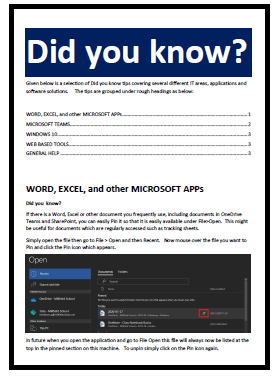 I have updated my Did you know guide to include more tips and suggestions including more in relation to Microsoft Teams which continues to be my favourite tool during this period of Remote Learning.
I have updated my Did you know guide to include more tips and suggestions including more in relation to Microsoft Teams which continues to be my favourite tool during this period of Remote Learning.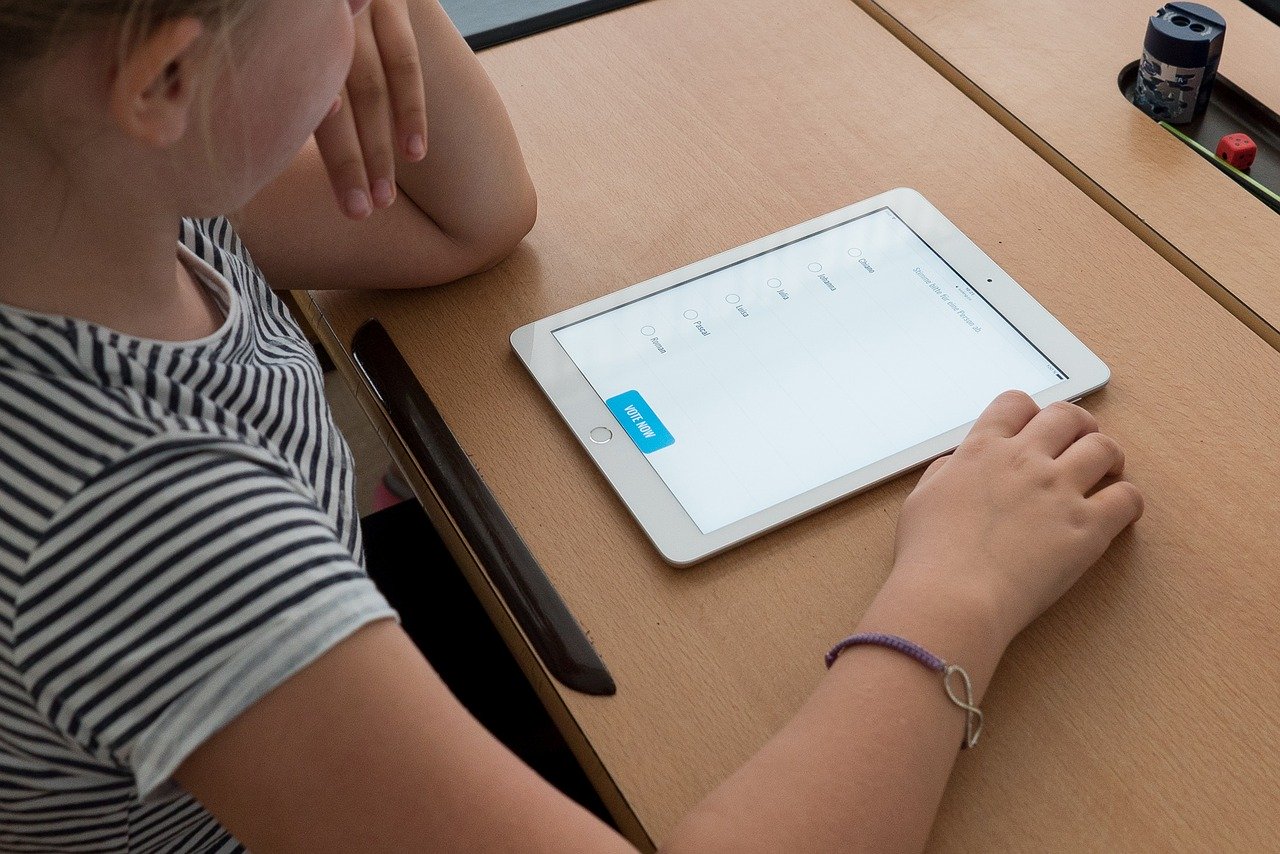 Last nights Microsoft TweetMeet focussed on Remote Learning. It was certainly a busy session with my tweetdeck updating faster than I could think; it was a blur of activity. Overall it was an excellent session and probably the best TweetMeet I have been involved in so far. I therefore thought it might be useful to summarise the key messages I took away from the event:
Last nights Microsoft TweetMeet focussed on Remote Learning. It was certainly a busy session with my tweetdeck updating faster than I could think; it was a blur of activity. Overall it was an excellent session and probably the best TweetMeet I have been involved in so far. I therefore thought it might be useful to summarise the key messages I took away from the event: As we head towards the end of the Easter break and into the new term and for a lot of schools, a period of remote learning, I thought I would share my thoughts and tips on remote learning.
As we head towards the end of the Easter break and into the new term and for a lot of schools, a period of remote learning, I thought I would share my thoughts and tips on remote learning.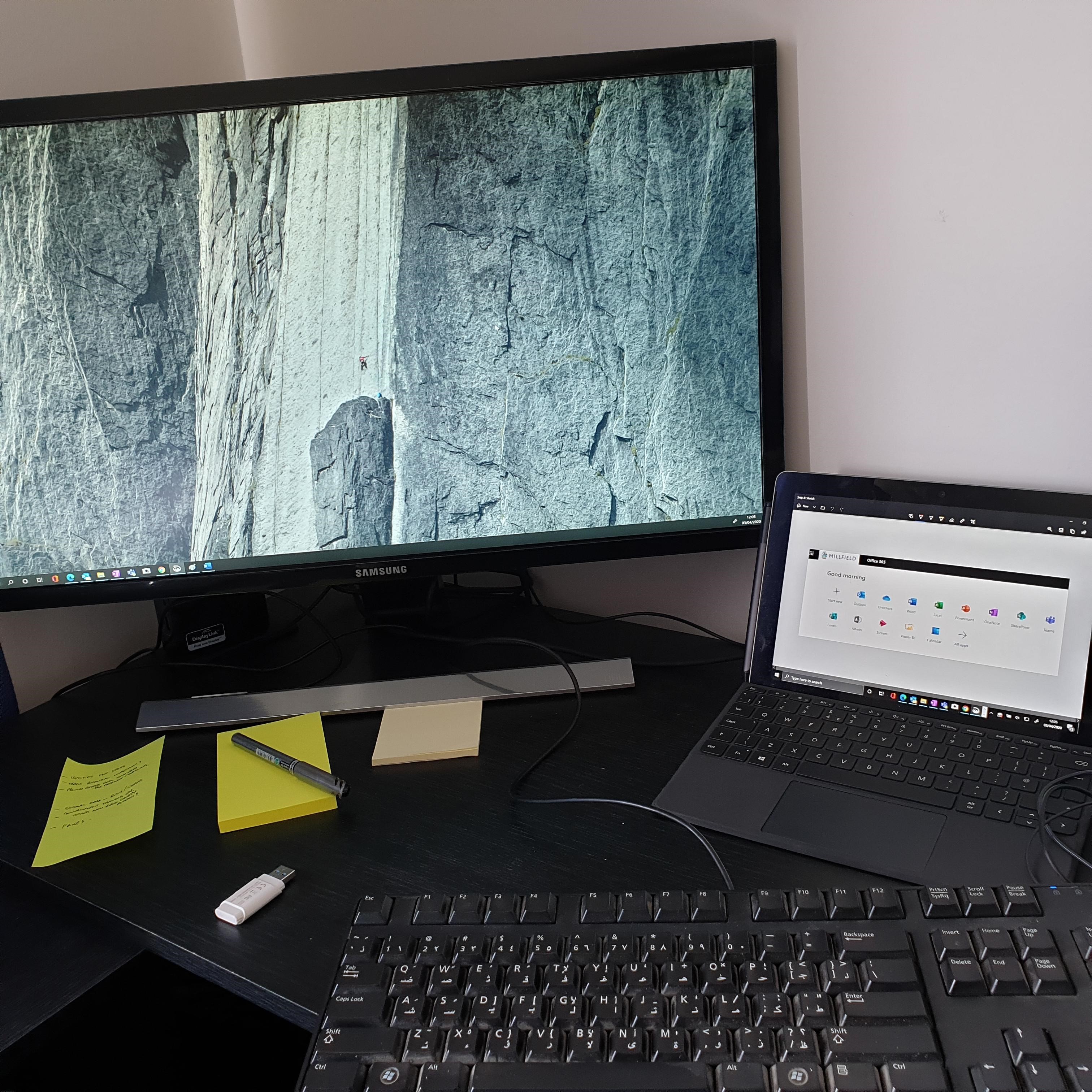 Its now been 2 weeks of working from home so I thought I would share how I am getting on.
Its now been 2 weeks of working from home so I thought I would share how I am getting on.
 For me our students online social media habits have to date been seen in a very negative light, being thought of as being anti-social or changing in their behaviour or attention spans. The last week has however shown how the online world can provide opportunities for socialising as much as the real world can, albeit in different ways. We have seen virtual pubs, lots of online Karaoke, community groups and much more form quickly online to overcome the challenges of social distancing and the potential harm of individual isolation. Thinking about children, and how parents may be overprotective and concerned of the dangers in the real world, therefore leading our students to be more isolated than they would have been in the past; For me I remember parental comments about returning home “before the street lights come on”. This kind of freedom to socialise in real life isn’t afforded in anyway to the same extent for the current generation of children. Is it therefore any wonder they would look to use the online world? I think going forward there will be a greater acceptance of the benefits of the hyper connectedness which our students already experience through the many apps they use.
For me our students online social media habits have to date been seen in a very negative light, being thought of as being anti-social or changing in their behaviour or attention spans. The last week has however shown how the online world can provide opportunities for socialising as much as the real world can, albeit in different ways. We have seen virtual pubs, lots of online Karaoke, community groups and much more form quickly online to overcome the challenges of social distancing and the potential harm of individual isolation. Thinking about children, and how parents may be overprotective and concerned of the dangers in the real world, therefore leading our students to be more isolated than they would have been in the past; For me I remember parental comments about returning home “before the street lights come on”. This kind of freedom to socialise in real life isn’t afforded in anyway to the same extent for the current generation of children. Is it therefore any wonder they would look to use the online world? I think going forward there will be a greater acceptance of the benefits of the hyper connectedness which our students already experience through the many apps they use. Although most of the above is positive I do have some concerns. I am worried that as people rushed to find solutions to overcome isolation, maintain social connection, etc, that they didn’t show due care for the protection of their personal data and for the resultant cyber risk. Great communities may have formed overnight using free services but what data did we give away regarding these groups and the individuals within them. It worries me that when things do settle down, we may realise that some decisions made have negative consequences. I suspect the pendulum which swings between individual privacy and public good, and which previously tended towards individual privacy may have shifted somewhat and may now tend more towards the public good. In some ways this may be a good thing, but what may be a good thing in a crisis may not be a good thing when everything returns to normality or near normality.
Although most of the above is positive I do have some concerns. I am worried that as people rushed to find solutions to overcome isolation, maintain social connection, etc, that they didn’t show due care for the protection of their personal data and for the resultant cyber risk. Great communities may have formed overnight using free services but what data did we give away regarding these groups and the individuals within them. It worries me that when things do settle down, we may realise that some decisions made have negative consequences. I suspect the pendulum which swings between individual privacy and public good, and which previously tended towards individual privacy may have shifted somewhat and may now tend more towards the public good. In some ways this may be a good thing, but what may be a good thing in a crisis may not be a good thing when everything returns to normality or near normality.